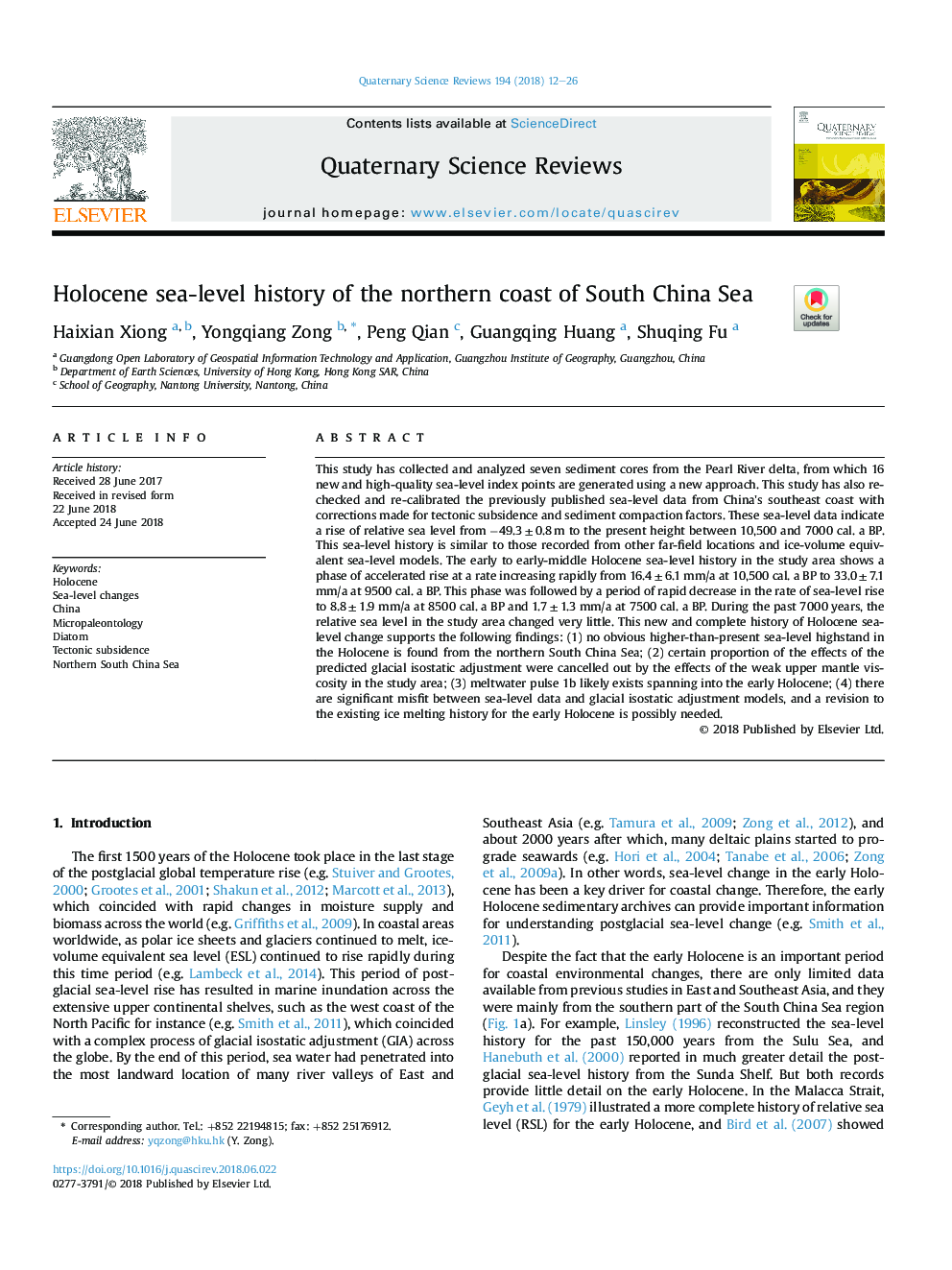| Article ID | Journal | Published Year | Pages | File Type |
|---|---|---|---|---|
| 8914670 | Quaternary Science Reviews | 2018 | 15 Pages |
Abstract
This study has collected and analyzed seven sediment cores from the Pearl River delta, from which 16 new and high-quality sea-level index points are generated using a new approach. This study has also re-checked and re-calibrated the previously published sea-level data from China's southeast coast with corrections made for tectonic subsidence and sediment compaction factors. These sea-level data indicate a rise of relative sea level from â49.3â¯Â±â¯0.8â¯m to the present height between 10,500 and 7000 cal. a BP. This sea-level history is similar to those recorded from other far-field locations and ice-volume equivalent sea-level models. The early to early-middle Holocene sea-level history in the study area shows a phase of accelerated rise at a rate increasing rapidly from 16.4â¯Â±â¯6.1 mm/a at 10,500 cal. a BP to 33.0â¯Â±â¯7.1 mm/a at 9500 cal. a BP. This phase was followed by a period of rapid decrease in the rate of sea-level rise to 8.8â¯Â±â¯1.9 mm/a at 8500 cal. a BP and 1.7â¯Â±â¯1.3 mm/a at 7500 cal. a BP. During the past 7000 years, the relative sea level in the study area changed very little. This new and complete history of Holocene sea-level change supports the following findings: (1) no obvious higher-than-present sea-level highstand in the Holocene is found from the northern South China Sea; (2) certain proportion of the effects of the predicted glacial isostatic adjustment were cancelled out by the effects of the weak upper mantle viscosity in the study area; (3) meltwater pulse 1b likely exists spanning into the early Holocene; (4) there are significant misfit between sea-level data and glacial isostatic adjustment models, and a revision to the existing ice melting history for the early Holocene is possibly needed.
Keywords
Related Topics
Physical Sciences and Engineering
Earth and Planetary Sciences
Geology
Authors
Haixian Xiong, Yongqiang Zong, Peng Qian, Guangqing Huang, Shuqing Fu,
